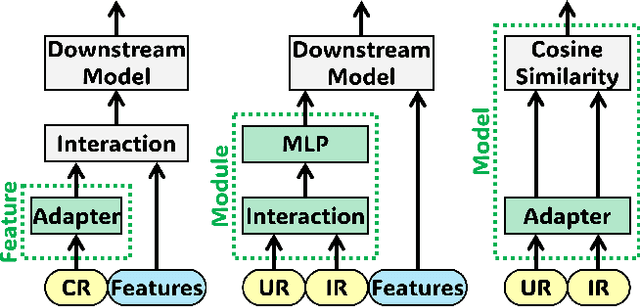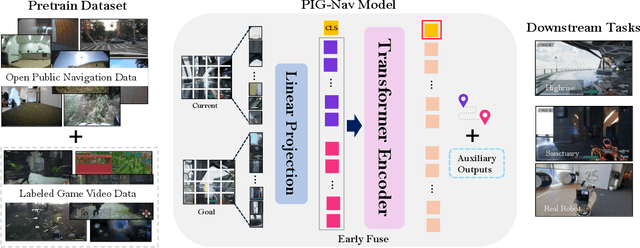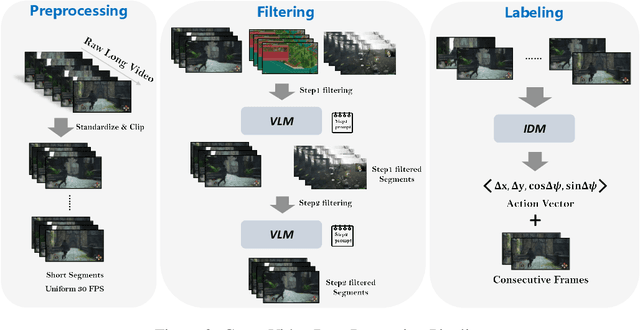Xiaoyu Chen
Align-then-Slide: A complete evaluation framework for Ultra-Long Document-Level Machine Translation
Sep 04, 2025Abstract:Large language models (LLMs) have ushered in a new era for document-level machine translation (\textit{doc}-mt), yet their whole-document outputs challenge existing evaluation methods that assume sentence-by-sentence alignment. We introduce \textit{\textbf{Align-then-Slide}}, a complete evaluation framework for ultra-long doc-mt. In the Align stage, we automatically infer sentence-level source-target correspondences and rebuild the target to match the source sentence number, resolving omissions and many-to-one/one-to-many mappings. In the n-Chunk Sliding Evaluate stage, we calculate averaged metric scores under 1-, 2-, 3- and 4-chunk for multi-granularity assessment. Experiments on the WMT benchmark show a Pearson correlation of 0.929 between our method with expert MQM rankings. On a newly curated real-world test set, our method again aligns closely with human judgments. Furthermore, preference data produced by Align-then-Slide enables effective CPO training and its direct use as a reward model for GRPO, both yielding translations preferred over a vanilla SFT baseline. The results validate our framework as an accurate, robust, and actionable evaluation tool for doc-mt systems.
Generative Annotation for ASR Named Entity Correction
Aug 28, 2025



Abstract:End-to-end automatic speech recognition systems often fail to transcribe domain-specific named entities, causing catastrophic failures in downstream tasks. Numerous fast and lightweight named entity correction (NEC) models have been proposed in recent years. These models, mainly leveraging phonetic-level edit distance algorithms, have shown impressive performances. However, when the forms of the wrongly-transcribed words(s) and the ground-truth entity are significantly different, these methods often fail to locate the wrongly transcribed words in hypothesis, thus limiting their usage. We propose a novel NEC method that utilizes speech sound features to retrieve candidate entities. With speech sound features and candidate entities, we inovatively design a generative method to annotate entity errors in ASR transcripts and replace the text with correct entities. This method is effective in scenarios of word form difference. We test our method using open-source and self-constructed test sets. The results demonstrate that our NEC method can bring significant improvement to entity accuracy. We will open source our self-constructed test set and training data.
RubikSQL: Lifelong Learning Agentic Knowledge Base as an Industrial NL2SQL System
Aug 25, 2025Abstract:We present RubikSQL, a novel NL2SQL system designed to address key challenges in real-world enterprise-level NL2SQL, such as implicit intents and domain-specific terminology. RubikSQL frames NL2SQL as a lifelong learning task, demanding both Knowledge Base (KB) maintenance and SQL generation. RubikSQL systematically builds and refines its KB through techniques including database profiling, structured information extraction, agentic rule mining, and Chain-of-Thought (CoT)-enhanced SQL profiling. RubikSQL then employs a multi-agent workflow to leverage this curated KB, generating accurate SQLs. RubikSQL achieves SOTA performance on both the KaggleDBQA and BIRD Mini-Dev datasets. Finally, we release the RubikBench benchmark, a new benchmark specifically designed to capture vital traits of industrial NL2SQL scenarios, providing a valuable resource for future research.
Large Foundation Model for Ads Recommendation
Aug 20, 2025



Abstract:Online advertising relies on accurate recommendation models, with recent advances using pre-trained large-scale foundation models (LFMs) to capture users' general interests across multiple scenarios and tasks. However, existing methods have critical limitations: they extract and transfer only user representations (URs), ignoring valuable item representations (IRs) and user-item cross representations (CRs); and they simply use a UR as a feature in downstream applications, which fails to bridge upstream-downstream gaps and overlooks more transfer granularities. In this paper, we propose LFM4Ads, an All-Representation Multi-Granularity transfer framework for ads recommendation. It first comprehensively transfers URs, IRs, and CRs, i.e., all available representations in the pre-trained foundation model. To effectively utilize the CRs, it identifies the optimal extraction layer and aggregates them into transferable coarse-grained forms. Furthermore, we enhance the transferability via multi-granularity mechanisms: non-linear adapters for feature-level transfer, an Isomorphic Interaction Module for module-level transfer, and Standalone Retrieval for model-level transfer. LFM4Ads has been successfully deployed in Tencent's industrial-scale advertising platform, processing tens of billions of daily samples while maintaining terabyte-scale model parameters with billions of sparse embedding keys across approximately two thousand features. Since its production deployment in Q4 2024, LFM4Ads has achieved 10+ successful production launches across various advertising scenarios, including primary ones like Weixin Moments and Channels. These launches achieve an overall GMV lift of 2.45% across the entire platform, translating to estimated annual revenue increases in the hundreds of millions of dollars.
SSEmb: A Joint Structural and Semantic Embedding Framework for Mathematical Formula Retrieval
Aug 06, 2025Abstract:Formula retrieval is an important topic in Mathematical Information Retrieval. We propose SSEmb, a novel embedding framework capable of capturing both structural and semantic features of mathematical formulas. Structurally, we employ Graph Contrastive Learning to encode formulas represented as Operator Graphs. To enhance structural diversity while preserving mathematical validity of these formula graphs, we introduce a novel graph data augmentation approach through a substitution strategy. Semantically, we utilize Sentence-BERT to encode the surrounding text of formulas. Finally, for each query and its candidates, structural and semantic similarities are calculated separately and then fused through a weighted scheme. In the ARQMath-3 formula retrieval task, SSEmb outperforms existing embedding-based methods by over 5 percentage points on P'@10 and nDCG'@10. Furthermore, SSEmb enhances the performance of all runs of other methods and achieves state-of-the-art results when combined with Approach0.
villa-X: Enhancing Latent Action Modeling in Vision-Language-Action Models
Jul 31, 2025Abstract:Visual-Language-Action (VLA) models have emerged as a popular paradigm for learning robot manipulation policies that can follow language instructions and generalize to novel scenarios. Recent work has begun to explore the incorporation of latent actions, an abstract representation of visual change between two frames, into VLA pre-training. In this paper, we introduce villa-X, a novel Visual-Language-Latent-Action (ViLLA) framework that advances latent action modeling for learning generalizable robot manipulation policies. Our approach improves both how latent actions are learned and how they are incorporated into VLA pre-training. Together, these contributions enable villa-X to achieve superior performance across simulated environments including SIMPLER and LIBERO, as well as on two real-world robot setups including gripper and dexterous hand manipulation. We believe the ViLLA paradigm holds significant promise, and that our villa-X provides a strong foundation for future research.
PIG-Nav: Key Insights for Pretrained Image Goal Navigation Models
Jul 23, 2025



Abstract:Recent studies have explored pretrained (foundation) models for vision-based robotic navigation, aiming to achieve generalizable navigation and positive transfer across diverse environments while enhancing zero-shot performance in unseen settings. In this work, we introduce PIG-Nav (Pretrained Image-Goal Navigation), a new approach that further investigates pretraining strategies for vision-based navigation models and contributes in two key areas. Model-wise, we identify two critical design choices that consistently improve the performance of pretrained navigation models: (1) integrating an early-fusion network structure to combine visual observations and goal images via appropriately pretrained Vision Transformer (ViT) image encoder, and (2) introducing suitable auxiliary tasks to enhance global navigation representation learning, thus further improving navigation performance. Dataset-wise, we propose a novel data preprocessing pipeline for efficiently labeling large-scale game video datasets for navigation model training. We demonstrate that augmenting existing open navigation datasets with diverse gameplay videos improves model performance. Our model achieves an average improvement of 22.6% in zero-shot settings and a 37.5% improvement in fine-tuning settings over existing visual navigation foundation models in two complex simulated environments and one real-world environment. These results advance the state-of-the-art in pretrained image-goal navigation models. Notably, our model maintains competitive performance while requiring significantly less fine-tuning data, highlighting its potential for real-world deployment with minimal labeled supervision.
The Sample Complexity of Online Strategic Decision Making with Information Asymmetry and Knowledge Transportability
Jun 11, 2025Abstract:Information asymmetry is a pervasive feature of multi-agent systems, especially evident in economics and social sciences. In these settings, agents tailor their actions based on private information to maximize their rewards. These strategic behaviors often introduce complexities due to confounding variables. Simultaneously, knowledge transportability poses another significant challenge, arising from the difficulties of conducting experiments in target environments. It requires transferring knowledge from environments where empirical data is more readily available. Against these backdrops, this paper explores a fundamental question in online learning: Can we employ non-i.i.d. actions to learn about confounders even when requiring knowledge transfer? We present a sample-efficient algorithm designed to accurately identify system dynamics under information asymmetry and to navigate the challenges of knowledge transfer effectively in reinforcement learning, framed within an online strategic interaction model. Our method provably achieves learning of an $\epsilon$-optimal policy with a tight sample complexity of $O(1/\epsilon^2)$.
Automatic Evaluation Metrics for Document-level Translation: Overview, Challenges and Trends
Apr 21, 2025Abstract:With the rapid development of deep learning technologies, the field of machine translation has witnessed significant progress, especially with the advent of large language models (LLMs) that have greatly propelled the advancement of document-level translation. However, accurately evaluating the quality of document-level translation remains an urgent issue. This paper first introduces the development status of document-level translation and the importance of evaluation, highlighting the crucial role of automatic evaluation metrics in reflecting translation quality and guiding the improvement of translation systems. It then provides a detailed analysis of the current state of automatic evaluation schemes and metrics, including evaluation methods with and without reference texts, as well as traditional metrics, Model-based metrics and LLM-based metrics. Subsequently, the paper explores the challenges faced by current evaluation methods, such as the lack of reference diversity, dependence on sentence-level alignment information, and the bias, inaccuracy, and lack of interpretability of the LLM-as-a-judge method. Finally, the paper looks ahead to the future trends in evaluation methods, including the development of more user-friendly document-level evaluation methods and more robust LLM-as-a-judge methods, and proposes possible research directions, such as reducing the dependency on sentence-level information, introducing multi-level and multi-granular evaluation approaches, and training models specifically for machine translation evaluation. This study aims to provide a comprehensive analysis of automatic evaluation for document-level translation and offer insights into future developments.
A temporal scale transformer framework for precise remaining useful life prediction in fuel cells
Apr 08, 2025Abstract:In exploring Predictive Health Management (PHM) strategies for Proton Exchange Membrane Fuel Cells (PEMFC), the Transformer model, widely used in data-driven approaches, excels in many fields but struggles with time series analysis due to its self-attention mechanism, which yields a complexity of the input sequence squared and low computational efficiency. It also faces challenges in capturing both global long-term dependencies and local details effectively. To tackle this, we propose the Temporal Scale Transformer (TSTransformer), an enhanced version of the inverted Transformer (iTransformer). Unlike traditional Transformers that treat each timestep as an input token, TSTransformer maps sequences of varying lengths into tokens at different stages for inter-sequence modeling, using attention to capture multivariate correlations and feed-forward networks (FFN) to encode sequence representations. By integrating a one-dimensional convolutional layer into the multivariate attention for multi-level scaling of K and V matrices, it improves local feature extraction, captures temporal scale characteristics, and reduces token count and computational costs. Experiments comparing TSTransformer with models like Long Short-Term Memory, iTransformer, and Transformer demonstrate its potential as a powerful tool for advancing PHM in renewable energy, effectively addressing the limitations of pure Transformer models in data-driven time series tasks.
 Add to Chrome
Add to Chrome Add to Firefox
Add to Firefox Add to Edge
Add to Edge